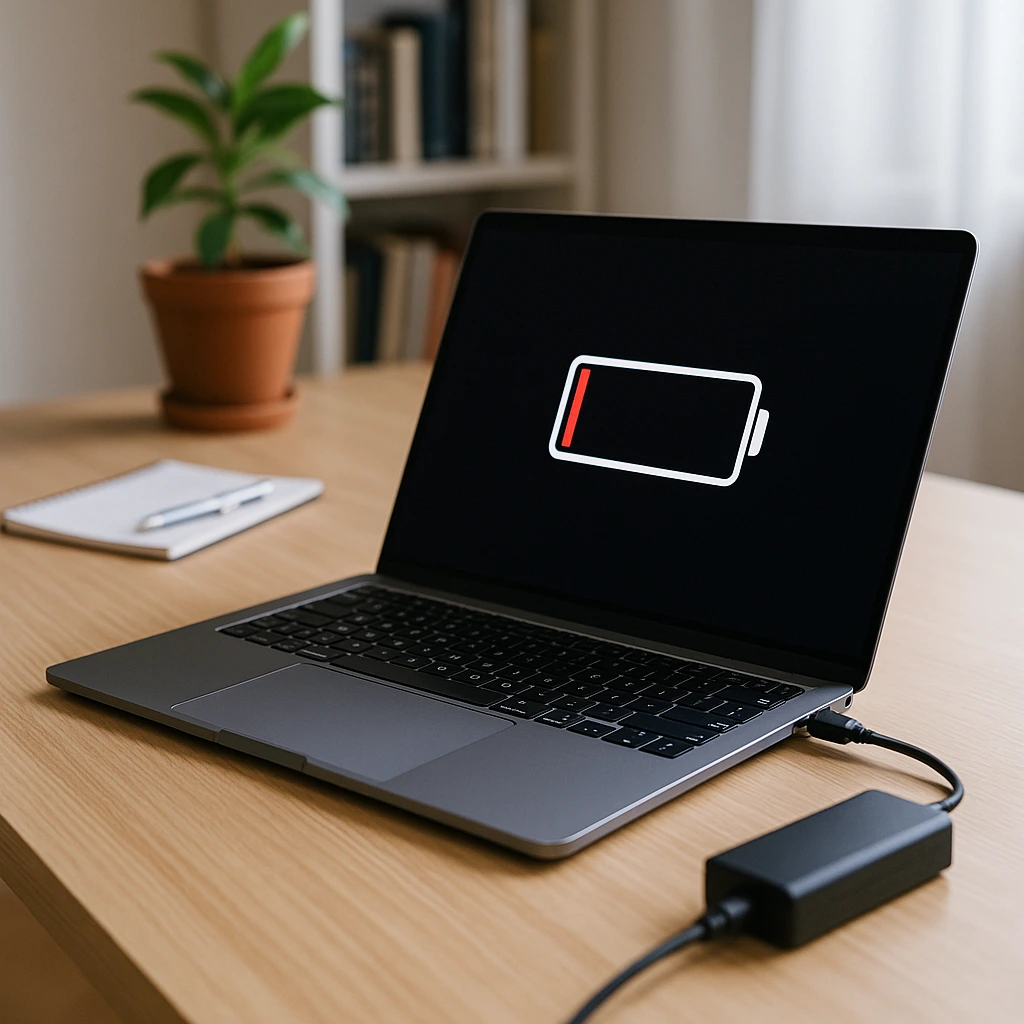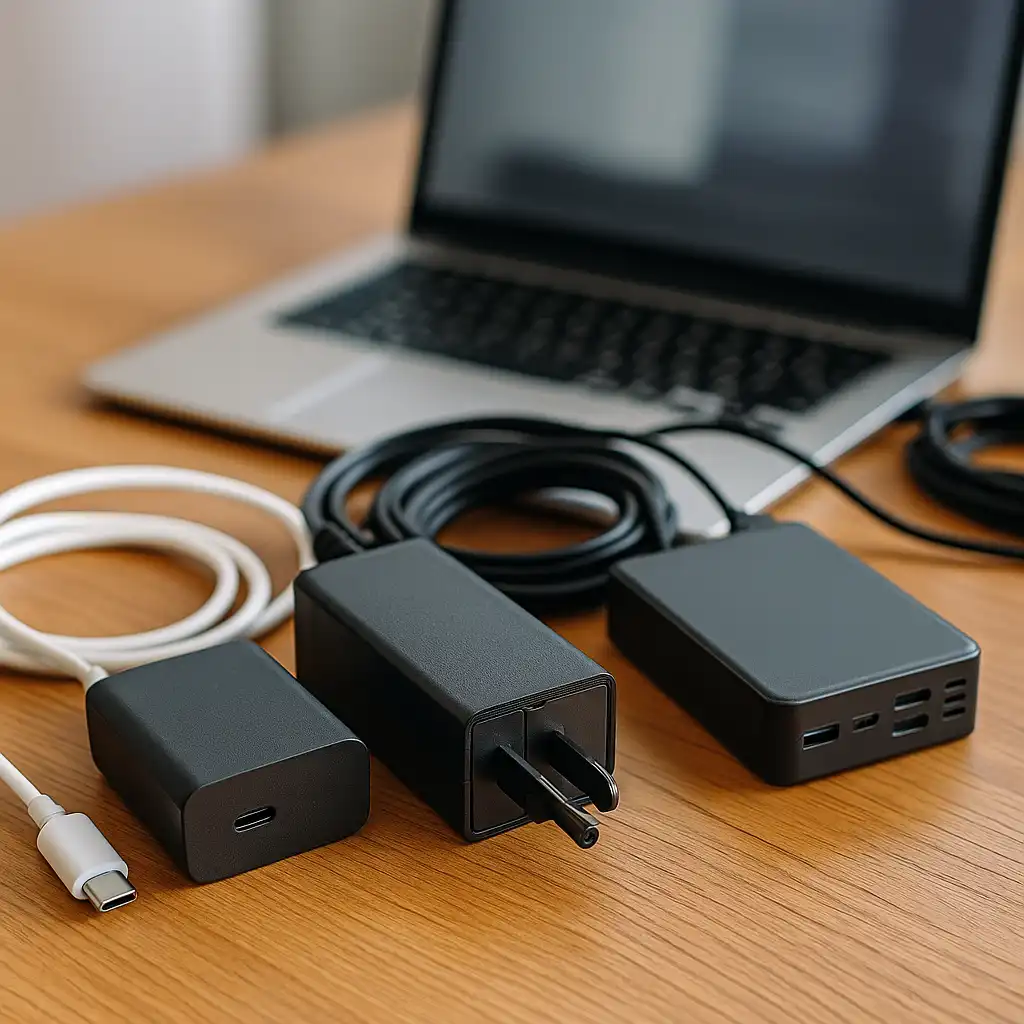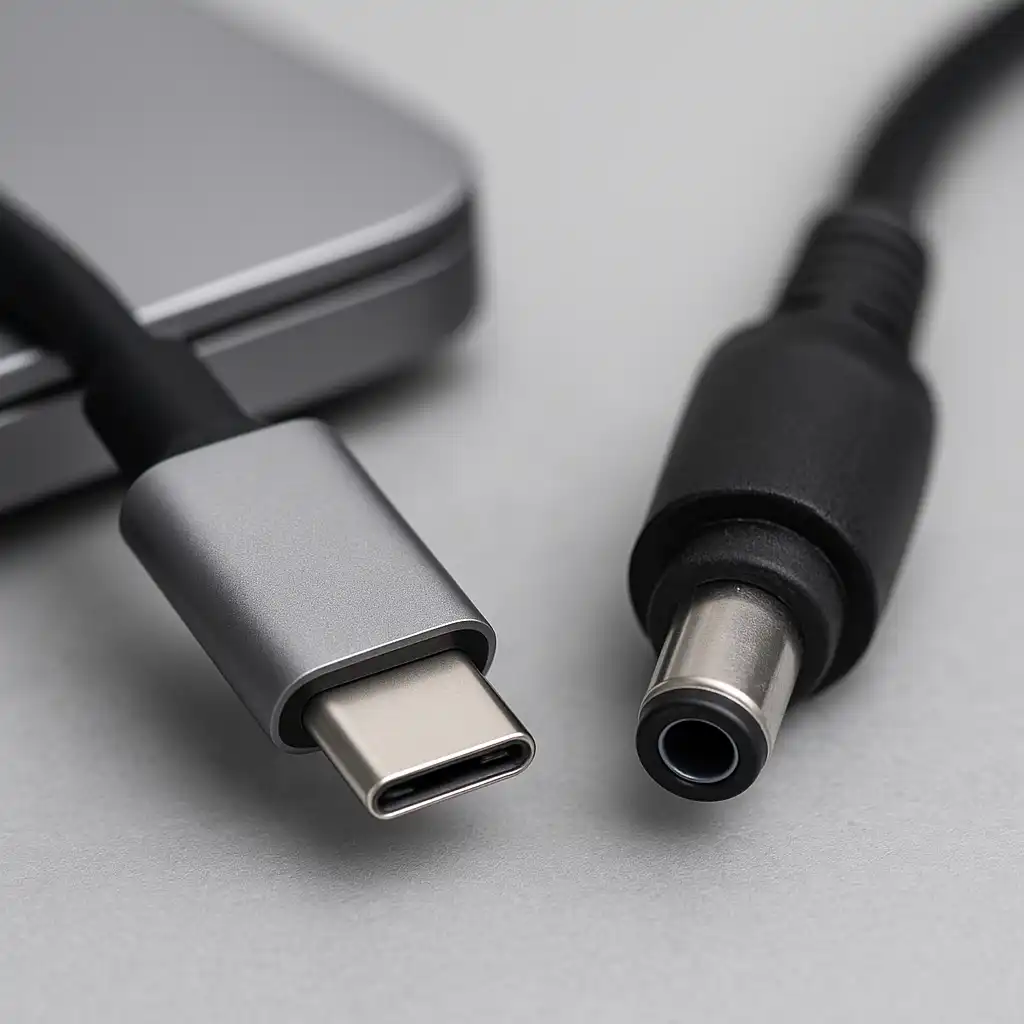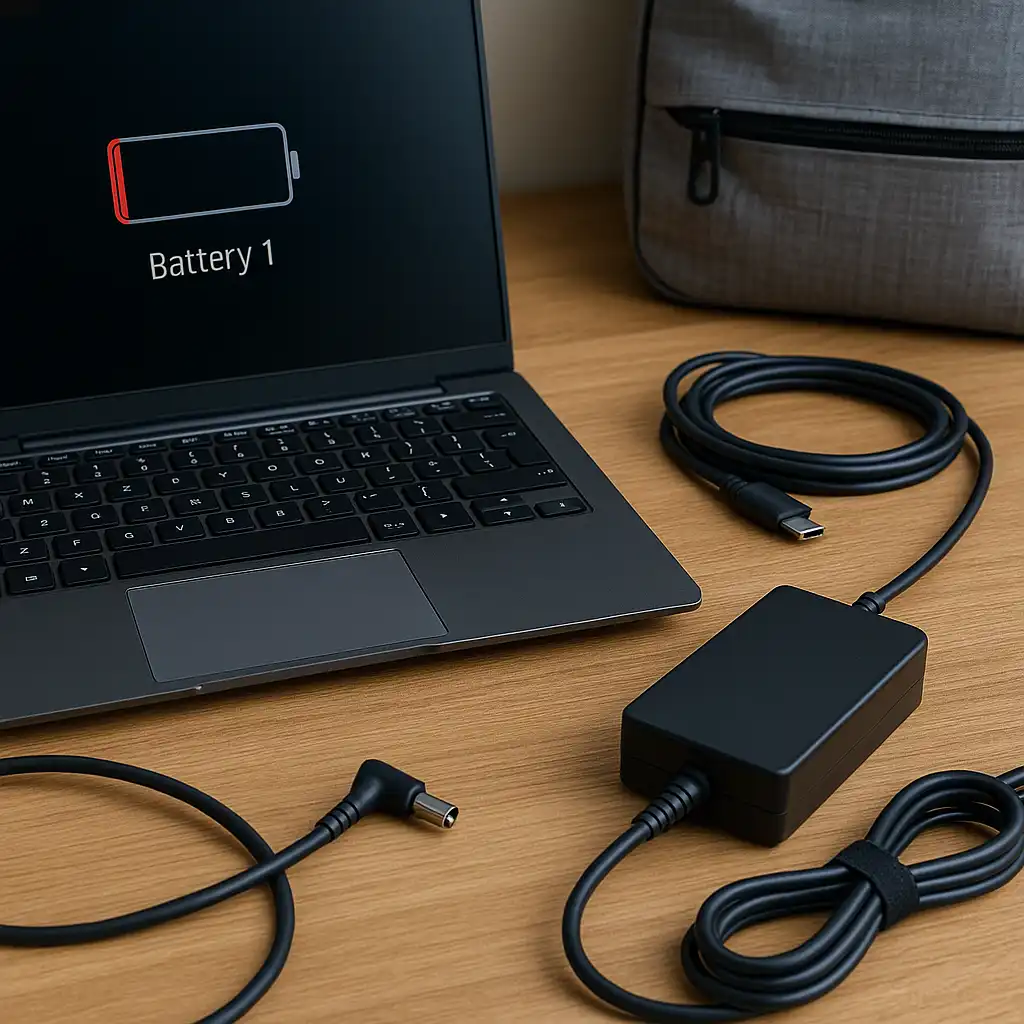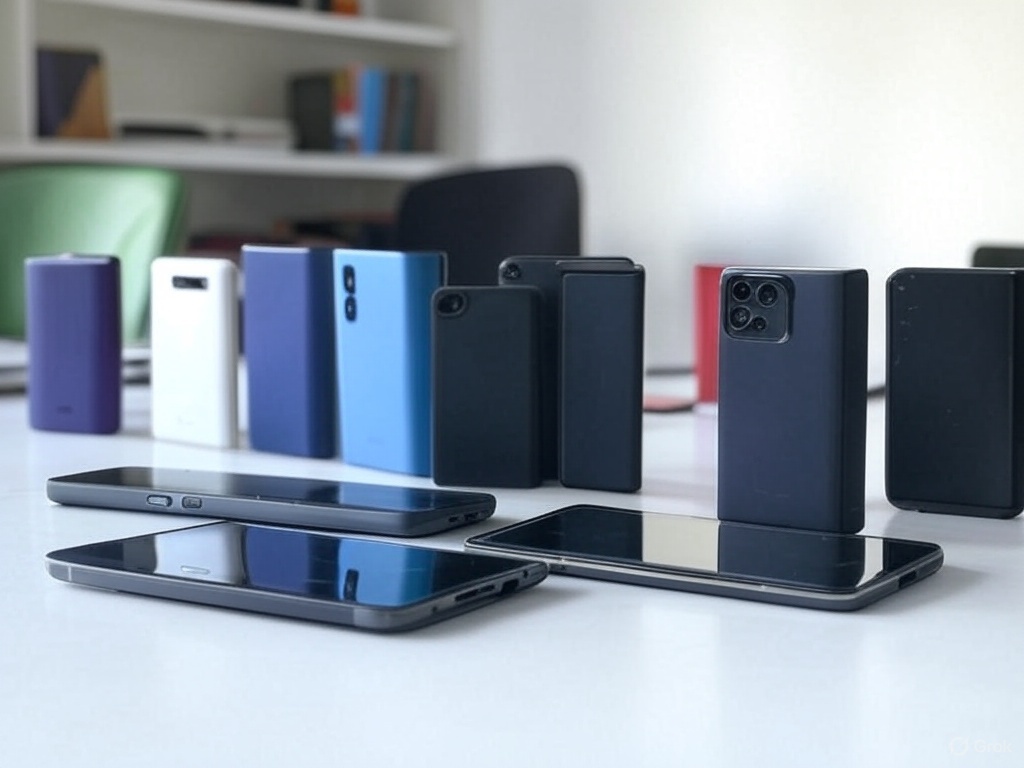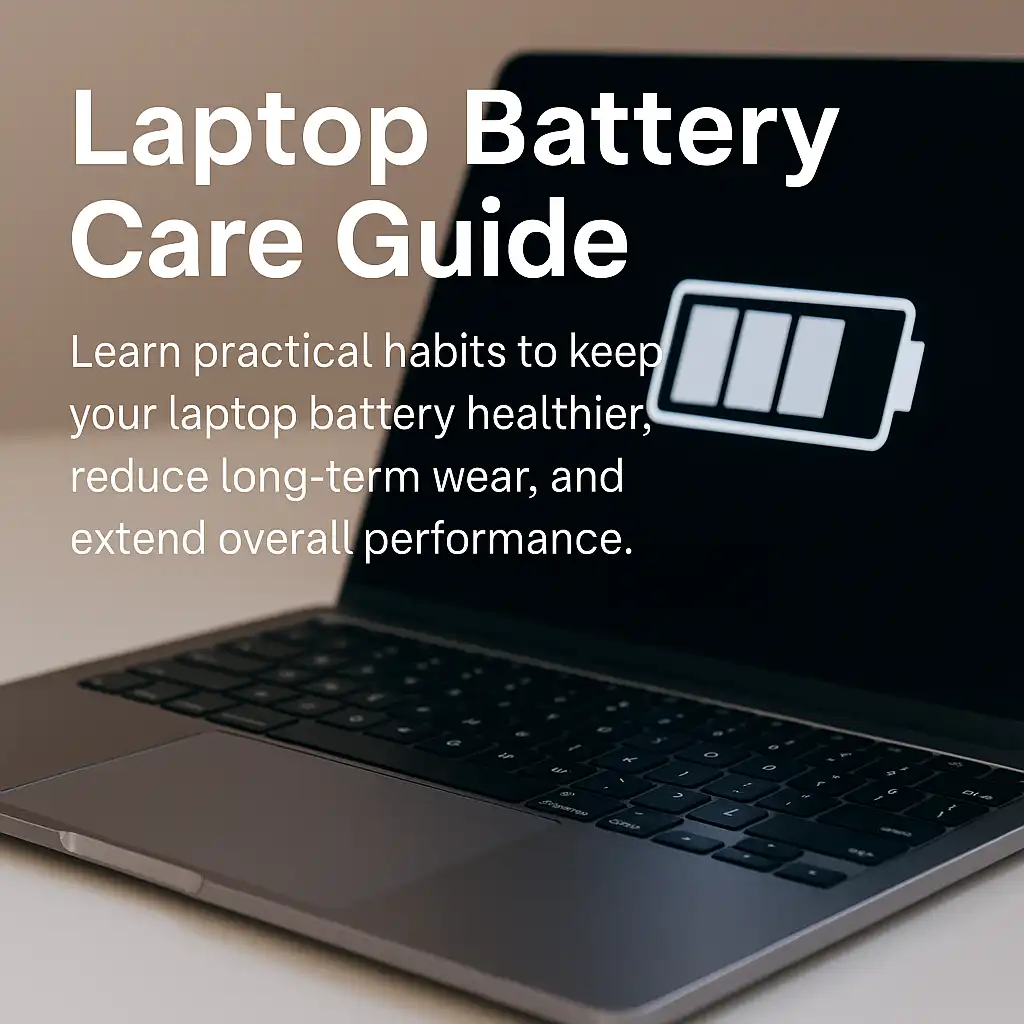Why Is My Battery Draining While Charging? Common Causes Explained
Disclosure: This post contains affiliate links. LaptopVoyager.com participates in the Amazon Associates Program and may earn commissions on qualifying purchases, at no extra cost to you.
Last Updated: December 2025
It’s frustrating to watch your laptop battery drop even though it’s plugged in. While it feels like a serious problem, this behavior usually comes down to power limits, a weak connection, or software using more energy than expected. Once you understand the root causes, fixing it becomes much easier.
👉 If you want practical habits that prevent draining issues, check out our full charging tips guide for step-by-step advice and simple troubleshooting.
🔍 Heavy Power Usage Can Override the Charger
Your laptop can drain while charging when it’s using more power than the charger can supply. In that case, the system pulls extra wattage from the battery to keep up—even though it’s plugged in.
This happens most often during:
- Gaming
- Editing videos or photos
- Running external displays
- Heavy multitasking
- High-brightness streaming
If your laptop expects 65W or 90W but the adapter only supplies 45W, draining is normal until workload decreases or a higher-watt charger is used.
🔍 Your Charger May Not Provide Enough Wattage
Even outside heavy tasks, an underpowered or partially compatible charger can struggle to keep the battery level stable. You may notice slow charging, percentage drops, or messages like “plugged in, not charging.”
Double-check:
- The laptop’s required wattage
- The charger’s actual output
- Whether the USB-C port supports full charging capability
- The charger brand and quality
A low-watt charger won’t damage your laptop—it just can’t keep up under load.
🔍 Faulty Cables, Ports, or Connectors
Loose, worn, or damaged charging components are a frequent cause of power instability. Even a slightly loose cable can cut the wattage enough for the battery to drain.
Watch for:
- Charging that cuts in and out when the cable moves
- Connectors that no longer latch firmly
- Frayed or kinked cables
- A port that feels loose or heats up
If multiple chargers show the same symptoms, the port may need repair.
🔍 Battery or Charging Firmware Issues
Charging behavior is controlled by firmware, and when it glitches, the system can mismanage power flow. Draining during charging sometimes appears after updates, crashes, or corrupted power settings.
Common signs include:
- Battery stuck at one percentage
- Charging slowing or stalling
- Issues appearing right after a system update
- Sudden drops after unplugging
A restart, firmware update, SMC/PRAM reset (Mac), or driver reinstall (Windows) often resolves these issues.
🔍 Background Apps and System Processes
Sometimes the laptop is simply burning more energy in the background than you realize. High CPU usage increases power draw, which can overwhelm a smaller charger.
Frequent culprits:
- Windows Update
- Cloud sync indexing large folders
- Dozens of open browser tabs
- Startup apps running constantly
- Malware or unknown processes
Checking Task Manager or Activity Monitor quickly reveals if something is pulling too much power.
🔍 Battery Health Decline or Internal Damage
If everything else checks out, the battery may simply be worn out or developing faults. Older or failing cells can’t keep up with normal power demands, causing draining even on AC power.
Watch for:
- Rapid draining during light use
- Random shutdowns
- Capacity dropping below ~70%
- Battery swelling—stop using the laptop immediately
When the cells deteriorate, replacement is the most reliable fix.
📌 Key Takeaways
- Heavy workloads can exceed your charger’s wattage
- Underpowered chargers commonly cause draining
- Damaged cables or ports weaken power delivery
- Firmware issues can disrupt charging behavior
- Background apps may spike power usage
- Worn batteries may drain even on AC power
🟢 FAQs
Q: Is it normal for a laptop to drain while charging?
Yes—when power use exceeds the charger’s wattage or the charging connection is unstable.
Q: Can battery wear cause this issue?
Absolutely. Failing batteries may struggle to hold charge even with AC power connected.
Q: Why does this only happen when gaming?
Gaming greatly increases power consumption. If the charger can’t keep up, the battery fills the gap.
Q: Will a higher-watt charger fix the problem?
If wattage is the cause, matching or exceeding your laptop’s recommended wattage usually solves it.
✅ Conclusion
A laptop draining while charging usually points to a wattage mismatch, loose connection, high workload, or a battery that’s nearing end of life. The good news is that most causes are easy to diagnose—often within minutes. With the right charger, a solid cable connection, and a healthy battery, your laptop should return to stable charging behavior.

